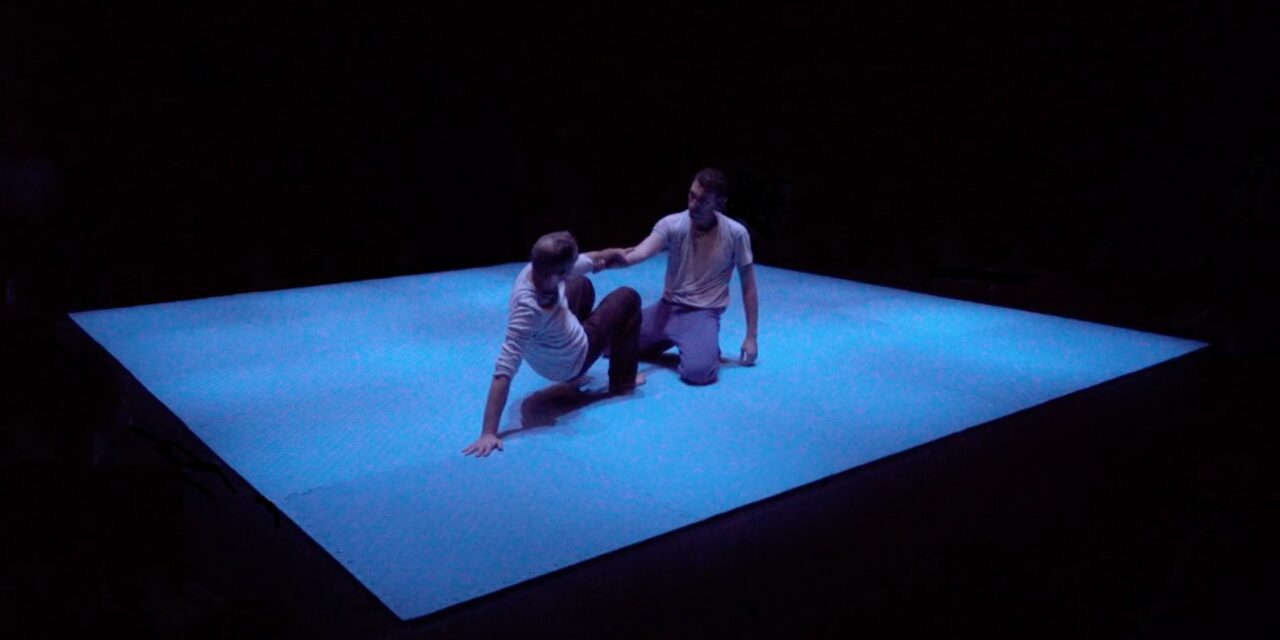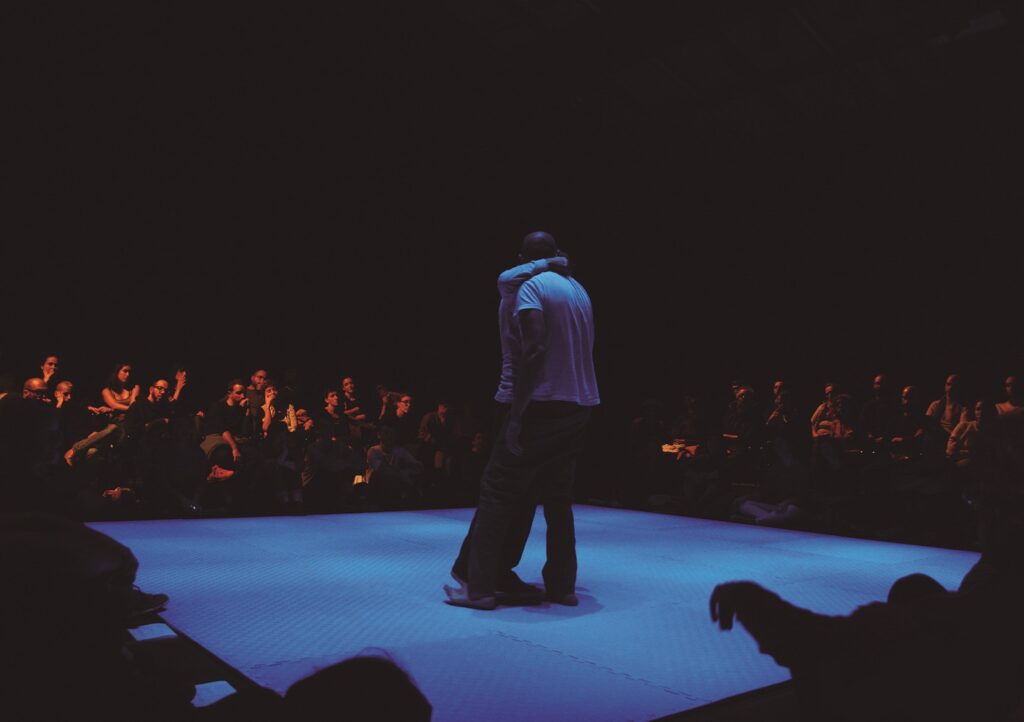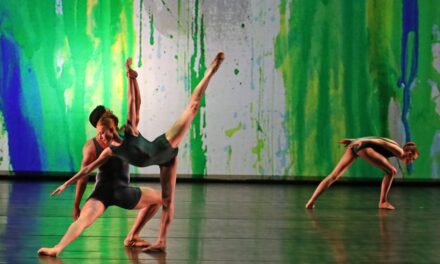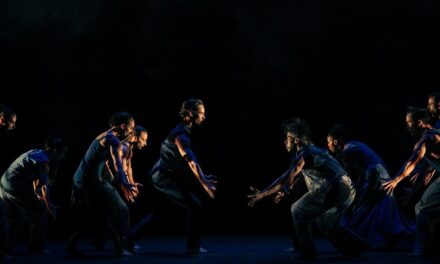My introduction to queerness was through the AIDS epidemic. In my Texas hometown, the unspoken culture was, “Don’t ask, don’t tell.” I clung to “The Meaning of Matthew” by Judy Shepard with the guise that I only read it for an English assignment. In reality, I tried to get a glimpse into parts of myself I kept hidden. Soon, same-sex attraction became synonymous in my psyche with tragedy, persecution and illness. So much so that simply touching another man felt like a risky game of life and death. I think it’s safe to say I’m not the only queer person who grew up with this same journey of self-discovery.
On April 16, Spanish dancer Aimar Pérez Galí and Venezuelan dancer Daniel Méndez constructed a world on stage that retold this queer history with a new lens. “A System in Collapse Is a System Moving Forward,” a contact improv dance piece choreographed by Galí and set to a lecture by ACT UP NY member Jon Greenberg (which also provides the title of the piece), recontextualizes the narrative of the AIDS epidemic to be less about destruction and shame and more about love, community and care. As someone who lived with HIV, Greenberg questions what the epidemic taught him and shares how AIDS revolutionized his existence. On stage, dancers and life partners Galí and Méndez collapse into each other as Greenberg muses. With each collapse, they explore how to move forward. “A System in Collapse Is a System Moving Forward” consolidates years of relearning how to love into an hour-long dance of colliding bodies rising again in the arms of another.
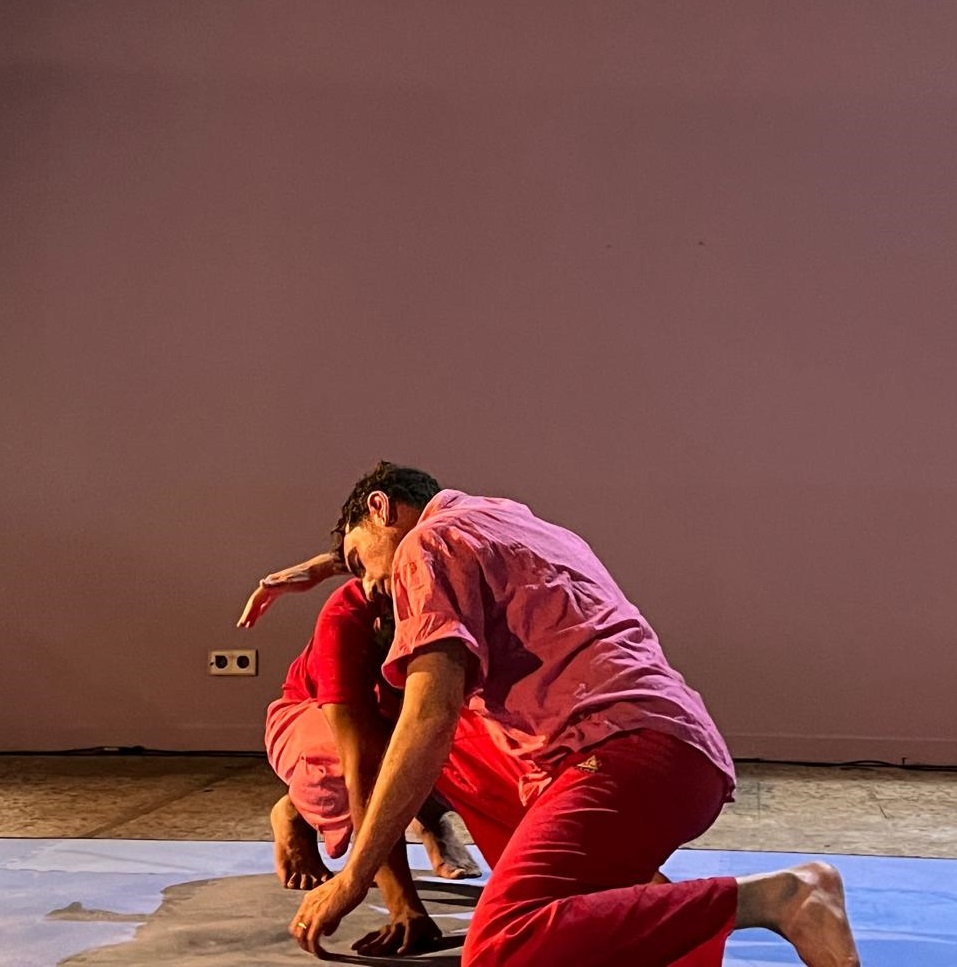
Aimar Pérez Galí and Daniel Méndez in “A System in Collapse” (lecture demonstration) – Photo by Renan Laru-an.
“We are taught to be afraid of what we don’t know,” Greenberg says over the Joyce J. Cammilleri Hall speakers at USC.
Galí and Méndez look at each other and slowly fall chest-to-chest. The first moments of this contact improv are safe, testing the waters of a world they don’t know yet. They give each other their weight, making themselves vulnerable to the other. There’s a beautiful motif woven throughout in which the head lies in the other’s hands. Méndez does this first, letting the weight of his head fall into Galí’s hands. In a way, it’s sensual and romantic. But as Greenberg continues to speak about his experience with HIV/AIDS, the movement meant to conjure butterflies is given a dark cloud hovering above it.
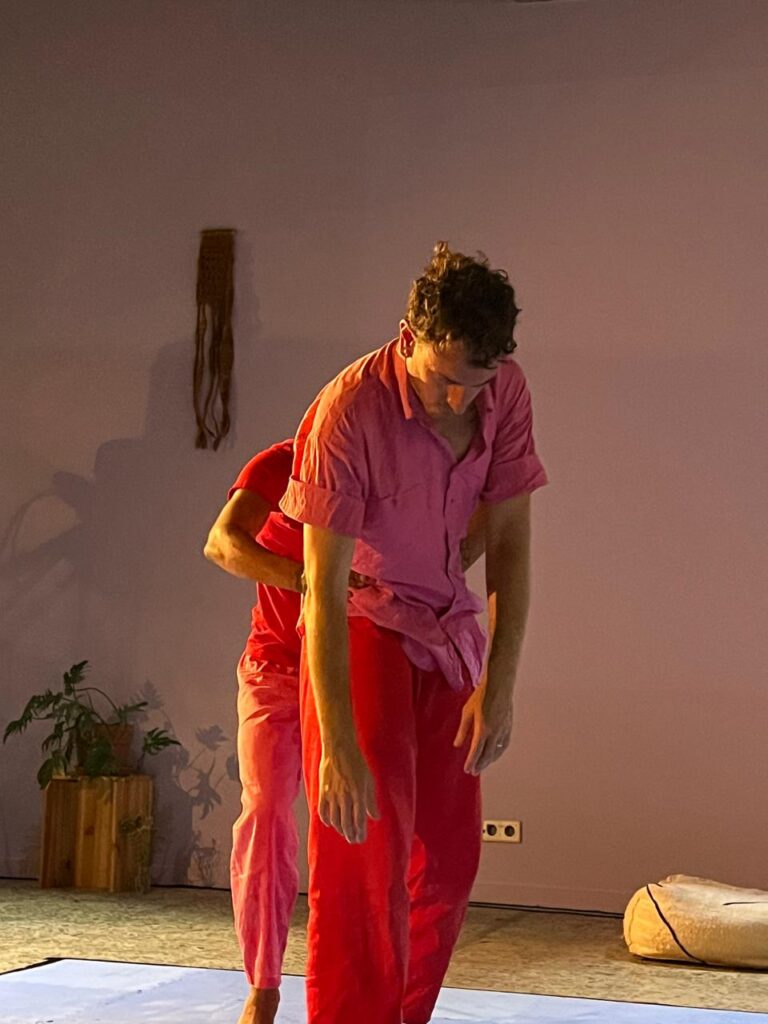
Aimar Pérez Galí and Daniel Méndez in “A System in Collapse” (lecture demonstration) – Photo by Renan Laru-an.
What keeps the dark cloud at bay is the duo’s persistence. They collapse, but they continue. They fall, but they continue. They risk, but they continue.
Beneath the improvised movement is a directive to continue moving in community with the other. As the lecture plays, Galí and Méndez hold hands above their head as they lock eyes. It’s a sign of support. The movement itself is subtly complex, layering improv with pre-choreographed phrases. While difficult to discern the two, the use of contact improv to stitch each other’s impulses together provides a playground for connection, emphasizing the purpose and message of the piece altogether, especially when it leads to sections of higher tempo and broader choices.
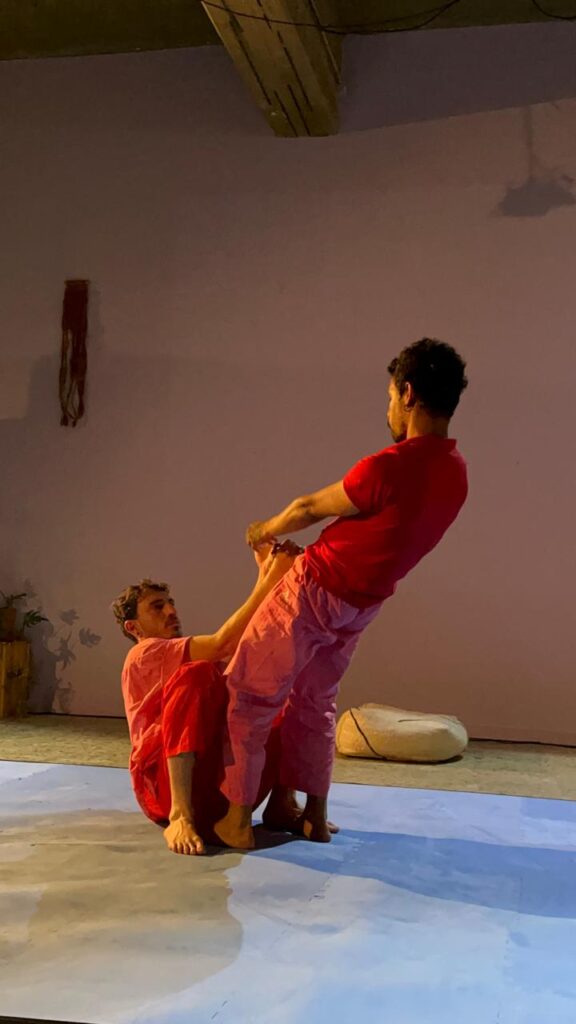
Aimar Pérez Galí and Daniel Méndez in “A System in Collapse” (lecture demonstration) – Photo by Renan Laru-an.
Their ebbing grows into larger waves, and the contact is gone. After shifting into a phrase that invites further improvisation, the steps get virtuosic. However, they continue to reconnect by mimicking one another’s moves, whether by raising a hand or turning. As Northwestern University assistant professor Miguel Caballero-Vázquez shared in the talk-back, improvisation imitates the unpredictability of sexual intimacy — one of the biggest legacies of the AIDS epidemic. No one knows what a chance encounter could lead to. This is the fear Greenberg warned us about at the beginning of the work. It’s scary for something to be unpredictable, but Galí and Méndez lean into it. Beneath the historical tragedy, there are people. “A System in Collapse” reminds viewers that the decades of loss only make the moments of intimacy, sexual or not, even more valuable. When Galí and Méndez first touched, there was hesitancy for fear of being too close to something forbidden. Yet, as the piece continued, the touches grew tender. With Galí’s head in his lap, Méndez investigates. He holds Galí’s arm, digging his head into his skin and hair like a cat. They later claw at each other’s shirts, not particularly seeking to take the garments off, but to find new ways of holding onto each other.
Then there’s this moment where the world stops. After collapsing onto the ground, Galí and Méndez tumble into each other. They land with Méndez lying back into Galí’s chest, nestled in between his legs as they sit on the floor. From behind, Galí wraps an arm around Méndez’s chest, and Méndez grips his forearm. In stillness, they close their eyes. Together, they take a deep breath.
The piece doesn’t end there, but the vignette matters most.
The goal for their recontextualization of AIDS is to find that deep breath where fear does not drive the movement. There is no hiding or succumbing to the narratives of tragedy and strife. I’ve stopped hiding behind books about the dead, questioning who I love and how to say it, long before seeing “A System in Collapse Is a System Moving Forward.” However, the piece reminds me to stand taller, lean further and collapse deeper. There’s a community worth living for, and it is one deep breath away.
This article was edited on 5/6/2025 to correct a link error.
Written by Steven Vargas for LA Dance Chronicle.
Featured image: Aimar Pérez Galí and Daniel Méndez in “A System in Collapse” – Photo by Siddharth Gautam Singh.

